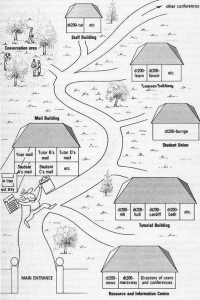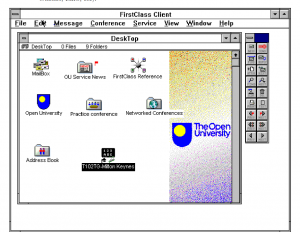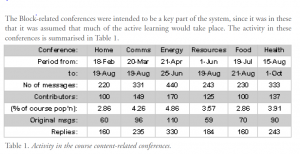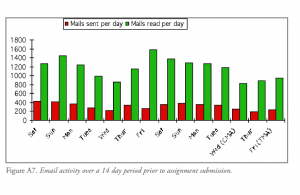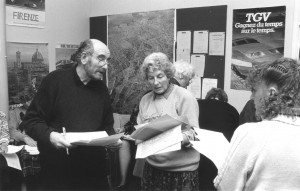On Establishing Creative Writing Programmes
Wednesday, August 14th, 2024The below is part of a posting written on an OU blog by Linda Anderson in 2018.
I fetched up at the OU in 2002, already a designer and deliverer of a successful distance learning writing course. Here’s what I knew. Distance learning widens participation in a dramatic way. It is a truly intimate form of shared learning. It empowers shyer people to have their say. Students benefit from a permanent record of feedback and discussions that they can return to as necessary. I also knew about the risk of quarrels that can blaze suddenly, leaving relationships in tatters. I knew on a deeply personal level about tutor burnout. I had been warned about it on the OU training course but had naively failed during the first couple of years to set limits to word counts or frequency of submissions to tutors. In the production of A215, I hope I kept in mind the tutors’ right to have a life.
I still remember how thrilled and challenged I felt by the job. At its core was a highly demanding form of teaching that had to be lucid and accessible as well as replete with lively, planned activities to both practise and test skills. But there was a cluster of other exciting elements: team management, peer review, editing, programme-making, interviewing famous writers, liaising with publishers internal and external, and ultimately, tutor training and supervision.
In the making of A215, what I wanted to import from the Lancaster model was the student-centred approach, to mix tutor-led online conferencing with occasional face-to-face day schools. I wanted students to try their hand at the three main genres of fiction, poetry, and life writing, finally being free to specialise in their chosen form or forms. The production team was a superb one, and despite our fair share of arguments and injured feelings, our work was relatively frictionless. The main authors were myself; Mary Hammond, an expert on publishing; Sara Haslam, a prime mover in the establishment of the ‘Start Writing’ series; W.N. Herbert, award-winning poet based at Newcastle University; and Derek Neale, who was steeped in the UEA writing culture both as an MA and PhD graduate and tutor for many years. Bob Owens, despite his workload as head of department and staff tutor in London, edited the Readings section of the Workbook. He and Shirley Coulson (course manager) contributed their extensive knowledge of how to navigate OU systems, a vital role in a team with so many new staff. Clare Spencer gave us an AL perspective.
I was surprised at how much teamwork kept us to a tight schedule while not curbing our creativity. Different colleagues often pushed the boundaries to create ambitious or unexpected elements, such as Sara Haslam’s recorded panel discussion by eminent biographers – Michael Holroyd, Blake Morrison, and Jackie Kay, chaired by Robert Fraser – a beautifully realised debate. Derek Neale included a range of innovative styles of biographical writing in the Workbook, showing how to mix fact and fiction. Within a couple of years we had an array of audio CDs, a study guide, and a 600 plus page book, Creative Writing: A Workbook with Readings, co-published with Routledge.
The course launched in 2006 with approximately 2500 students and gained the highest retention level in the University as well as high scores of student satisfaction. The Workbook was acclaimed and is still in wide use in other universities. Over a hundred ALs, most of them new to the OU, were trained and supported in online teaching. These successes remained consistent over eight years, so that 22,000 students had taken the course by the time I left in 2013. It was Maggie Butt, our first external examiner, who made what felt to me like the best tribute to the course: ‘You have managed the industrial scale without losing the personal touch.’
Creative Writing has gone from strength to strength. Derek Neale chaired A363: Advanced Creative Writing, which launched in 2008. Although I had some hand in the production, the course materials were largely written or produced by Derek Neale and Bill Greenwell. Derek designed a distinctive approach of experimenting with form. He aimed to deepen students’ engagement with fiction, poetry, and life writing while also introducing scriptwriting for various media. The core text A Creative Writing Handbook: Developing Dramatic Technique, Individual Style and Voice was co-published with A & C Black. When both courses were up and running, we were organising teaching and assessment of more than 3000 students annually with a very small course team.
Research developments
The PhD programme began in 2008. Of the four researchers I co-supervised with Derek Neale, two won internal scholarships against Faculty-wide competition and all gained their doctorates either shortly before or shortly after I retired. Three of their four novels have now been published and widely reviewed: The Longest Fight by Emily Bullock was named as ‘a fine addition to the canon of boxing literature’ in ‘The Independent’; Owl Song at Dawn by Emma Sweeney was shortlisted for the Amazon Rising Star Award in 2016; Heather Richardson’s Doubting Thomas was recently listed by ‘The Independent’ as one of the nine best Scottish fictions of 2017.
In the spring of 2012 I founded The Contemporary Cultures of Writing research group with my creative writing colleagues. I organised and chaired our first series of seminars at the Institute of English Studies, University of London on the theme of ‘The Rise of Creative Writing’ to coincide with just over forty years of Creative Writing in higher education in the UK. We explored the question of whether writing courses had a traceable and positive impact on literary culture. I found that eminent authors and academics like Maureen Freely, Andrew Cowan, and Alison MacLeod, were prepared to travel to London and speak for expenses only. (It’s a generosity that my colleagues have subsequently also been able to rely on.) The audiences were gratifyingly large, with about 25 people showing up to two events and a dozen for one on poetry. These series are still going strong and have given colleagues experience in event organisation and panel chairing as well as raising the public profile of the OU.
Linda Anderson worked as Reader in Creative Writing at The Open University from 2002 – 2013. She is a contributor to the short story anthology The Glass Shore, ed. Sinead Gleeson, which won the 2016 Irish Book of the Year Award. She is co-editor with Dawn Sherratt-Bado of the acclaimed anthology Female Lines: New Writing by Women from Northern Ireland (New Island 2017), described by Arts Council Head Damian Smyth as ‘one of the most important books to be published about Northern Ireland in half a century.’ Her novel Cuckoo, first published in 1986 by The Bodley Head, will be reissued in 2018 as a modern Irish classic by Turnpike Books.
FacebookTwitterEmailShare
Source: https://www.open.ac.uk/blogs/english/on-establishing-creative-writing-programmes/
